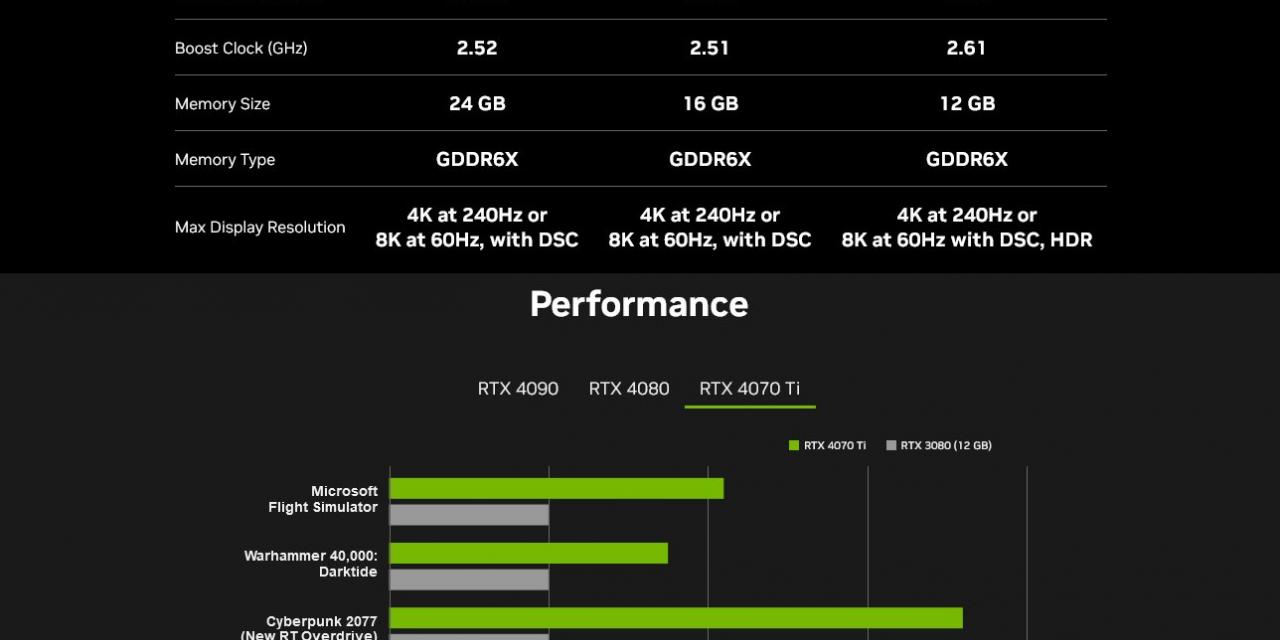
While the rest of us were relaxing and enjoying the festive break, someone at Nvidia accidentally published details of the new GeForce RTX 4070 Ti on its website. Not officially revealed until later this month, the new card’s specs were quickly pulled back down, but not before screenshots were captured of the confirmed specifications.
The accident confirms that the new GeForce RTX 4070 Ti is basically a rebadged GeForce RTX 4080 12GB, which was "unlaunched" by the company shortly after it was revealed last year. It was fair to assume the GeForce RTX 4070 Ti would be amongst the best graphics cards of 2023 just with that information, and that’s doubly sure now we know the confirmed specs. The RTX 4070 Ti will have 7680 Nvidia CUDA Cores capable of boosted clock speeds of 2.61 GHz, and 12GB of GDDR6X memory. It will also be powered by the AD104 GPU, along with a 192-bit memory interface.
The screenshot also contains details of how the new card stacks up against older GeForce cards, in this case, the GeForce RTX 3080 12GB. According to Nvidia’s testing, the newer card is 80% to 260% faster than the older board, with the new Ada Lovelace-based card really showing its strength in the Cyberpunk 2077 tests.
Of course, a lot is going to depend on how each manufacturer constructs Nvidia’s new GeForce card. We previously reported on leaked images of Gigabyte’s version of RTX 4070 Ti, which sported three fans and a large heatsink. This sort of strong cooling setup would lend itself well to overclocking, and likely boost the card’s output quite a bit.
Unfortunately, there’s still a large question mark over the price of the new card. It’s due to be revealed later this month, and rumors are saying $799 may be a likely price for Nvidia to set the new RTX 4070 Ti at. Given the RTX 4080 12GB started at $899, this seems a reasonable price, but keep in mind that manufacturers will play with this price point by raising and lowering the performance of it to match a higher or lower price.
